Saving America’s Broken Prairie
Out near where the continent divides, up on a ridge carved by ice over millennia, among blazing star, blue aster, purple prairie clover, harebell, and smooth brome — grasses all yet untouched by the plow — Neil Shook balls up some purple pasqueflower, shoves it into his nostril, and snorts.
He loves to do this.
“Mash it up really good,” Shook says as he hands me a piece of flower. “Really good.” And I, too, shove pasqueflower up my nose and snort.
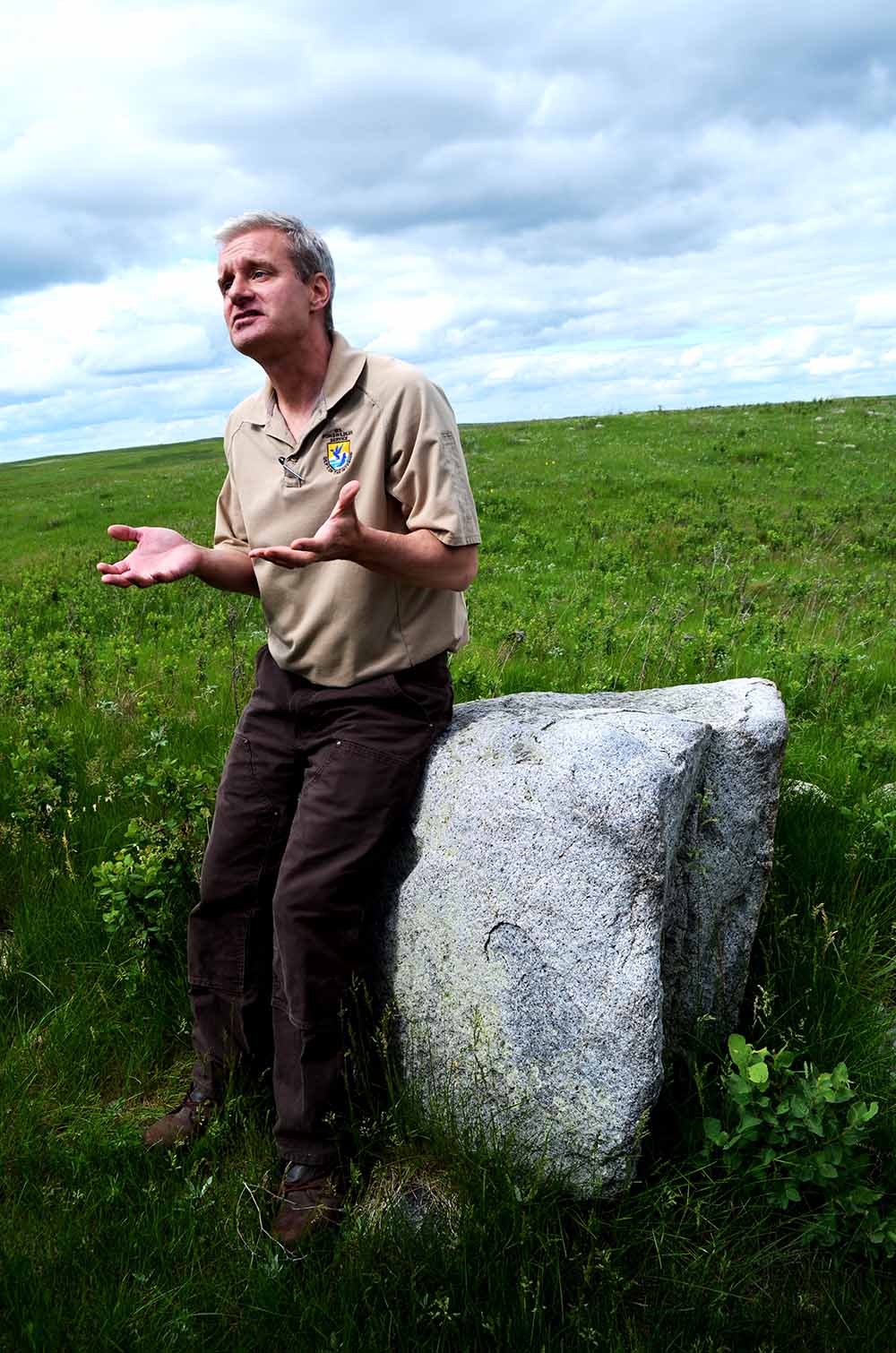
Neil Shook is the manager at Chase Lake National Wildlife Refuge, a 4,385-acre expanse of federally protected grasslands and wetlands in east-central North Dakota. Shook calls it “heaven.”
Visual: David J. Unger for Undark
“Did you get it?” Shook asks. I do. It’s a burn that is supposed to be just the thing for clearing a stuffy sinus, and while I’m not yet a convert, I get Shook’s larger point, too: This plain land is home to strange and wild life.
Shook is the manager at Chase Lake National Wildlife Refuge, a 4,385-acre expanse of federally protected grasslands and wetlands in east-central North Dakota. Each year, tens of thousands of pelicans, cormorants, gulls, herons, and others come here to nest, and I’ve come to learn more about a place Shook calls “heaven.”
On this stretch of grass, he bounces from plant species to grass species with a boyish exuberance that defies his years of work toward conserving America’s grassy core — a battle that has been, by almost every measure, a losing one.
This is as good an entry point as any into the complex, highly altered and highly threatened ecosystem that stretches some 1.4 million square miles down central Canada and through the U.S. heartland down to Mexico. Shove pasqueflower up your nose. Touch the grass as it waves in the wind. Hear the insects’ blanket drone. There is no etymological connection between “prairie” and “prayer,” but at times it seems there ought to be.
“Every plant out here has a purpose, and every animal or insect that’s found here has purpose,” Shook says. “There’s a relationship between those plants and animals, and we don’t understand what that relationship is — or we may not understand the importance of it — but it’s there for a reason. And when it’s gone, who knows what we lost?”
I went to North Dakota to see what I thought was the region’s defining story: The shale oil boom and bust that has reshaped the heartland’s economy and upended energy geopolitics just about everywhere. But it turns out that oil is just one part of a great transformation now underway in North America’s Great Plains and Central Lowlands, the likes of which has not been seen since the Dust Bowl. A biome that can be, in some spots, every bit as diverse and complex as a rainforest sits in the country’s backyard, and it’s coming undone.
This is flyover country. It’s easy to view North Dakota’s unending flatness as boring, empty, untamed. There’s a long tradition of seeing the prairie — this vast stretch of fertile, grass-dominated land — as negative space with no purpose other than to be transformed into something with purpose.
The famed naturalist Aldo Leopold saw it differently. “Prairie was, in fact, a community of wild animals and plants so organized,” he wrote, “as to build, through the centuries, the rich soil which now feeds us.”
In other words, all that pasqueflower, ragwort, indigo, and milkweed — all those bison, prairie dogs, pronghorns, daphnia, water boatmen, and eared grebes — have lived and died across the millennia, cycling nutrients from sun to leaves to soil to flesh and back into soil again. The soil that remains is packed with deep energy we turn into food for ourselves and the animals that feed us. Increasingly, this old, flat land provides fossil fuels, wind, and corn that we turn into modern energy and use in our homes and cars.
The prairie’s commodification has served as a tremendous boon to civilization, but not without costs. The grasslands of central North America have declined by approximately 79 percent in area since Europeans began arriving in large numbers in the early 1800s, according to the U.S. Geological Survey. In some places — particularly in the wetter, and more fertile, eastern tallgrass prairies — grassland cover has declined 99.9 percent since 1830.
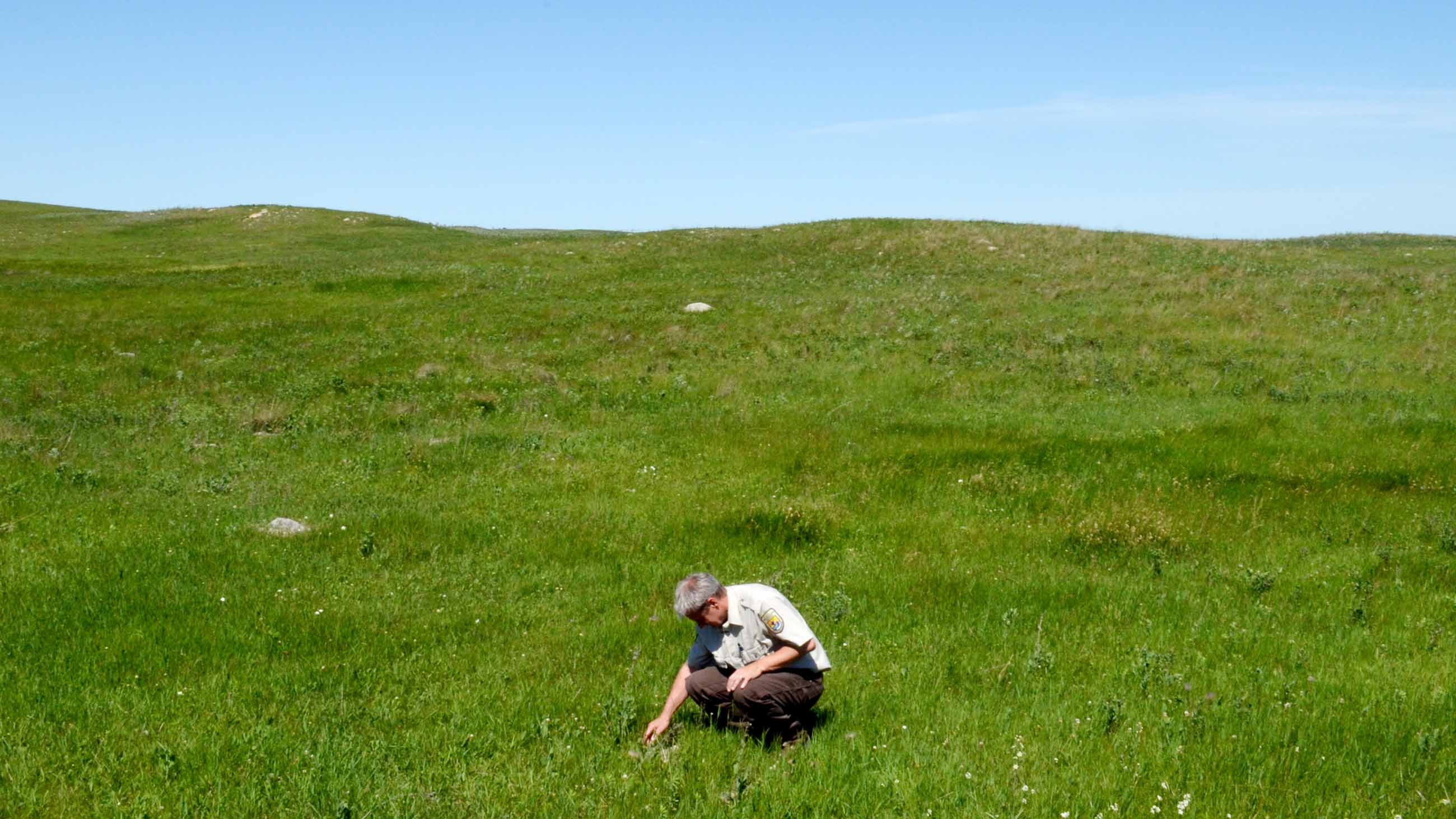
New pressures threaten to wipe out what’s left. Budgets for federal conservation programs are being cut. President Trump’s budget proposal would reduce Interior Department spending by 12 percent. Biofuel mandates, farm subsidies, and crop insurance give farmers incentive to put more land into production. Genetically modified seeds give them the technology to grow crops where they previously could not. An emergent middle class in China and across the developing world increases demand for the kinds of row crops that can feed nations. Oil production has creeped in from the west, spurred on by the fracking revolution, though low oil prices have tempered its advance. Wind power takes up space, too.
Throw climate change into the mix and it’s no wonder scientists call the American prairie one of the most threatened ecosystems on the planet.
“I’m always amazed that I can get on an airplane, pick up the [in-flight] magazine and have someone tell me about the crisis in the rainforest,” says John Devney, vice president for U.S. policy at Delta Waterfowl, a habitat conservation group focused on hunting. “Nobody tells this story,” he adds, gesturing to the grasslands behind him at a ranch outside Wing, North Dakota. “This is way more proximate to a hell of a lot of more people in the United States of America. What happens here in land use has implications — not just if you’re a duck hunter and you want to shoot a gadwall in Louisiana that’s produced in Sheridan County, North Dakota. It has implications [for] what’s happening in the Gulf of Mexico. It has consequences [for] what’s happening in Sioux Falls — with water quality, carbon sequestration values, [and] incredible biodiversity richness.”
The tension here is between maintaining the capacity to feed billions of people and maintaining the land that makes it possible. Soil is considered a finite resource, and can be revived only if given the time and space. Conservation science and holistic land management practices can help, but they compete with economics and policies that encourage liberal use of the plow.
When Neil Shook arrived at Chase Lake in 2010, he started seeing plumes of smoke on the horizon. Commodity prices were rising rapidly, and landowners rushed to convert as many acres as possible into agriculturally productive land. First they burned the grass, then they plowed the land and planted it with corn, soybean, or other crops. By 2013, it looked like “the apocalypse,” he recalls. “It was just like somebody dropped a nuke,” Shook says. “Just ‘boom.’”
It’s called “breaking” prairie when farmers turn grassland into cropland. And once broken, the prairie is hard to fix.
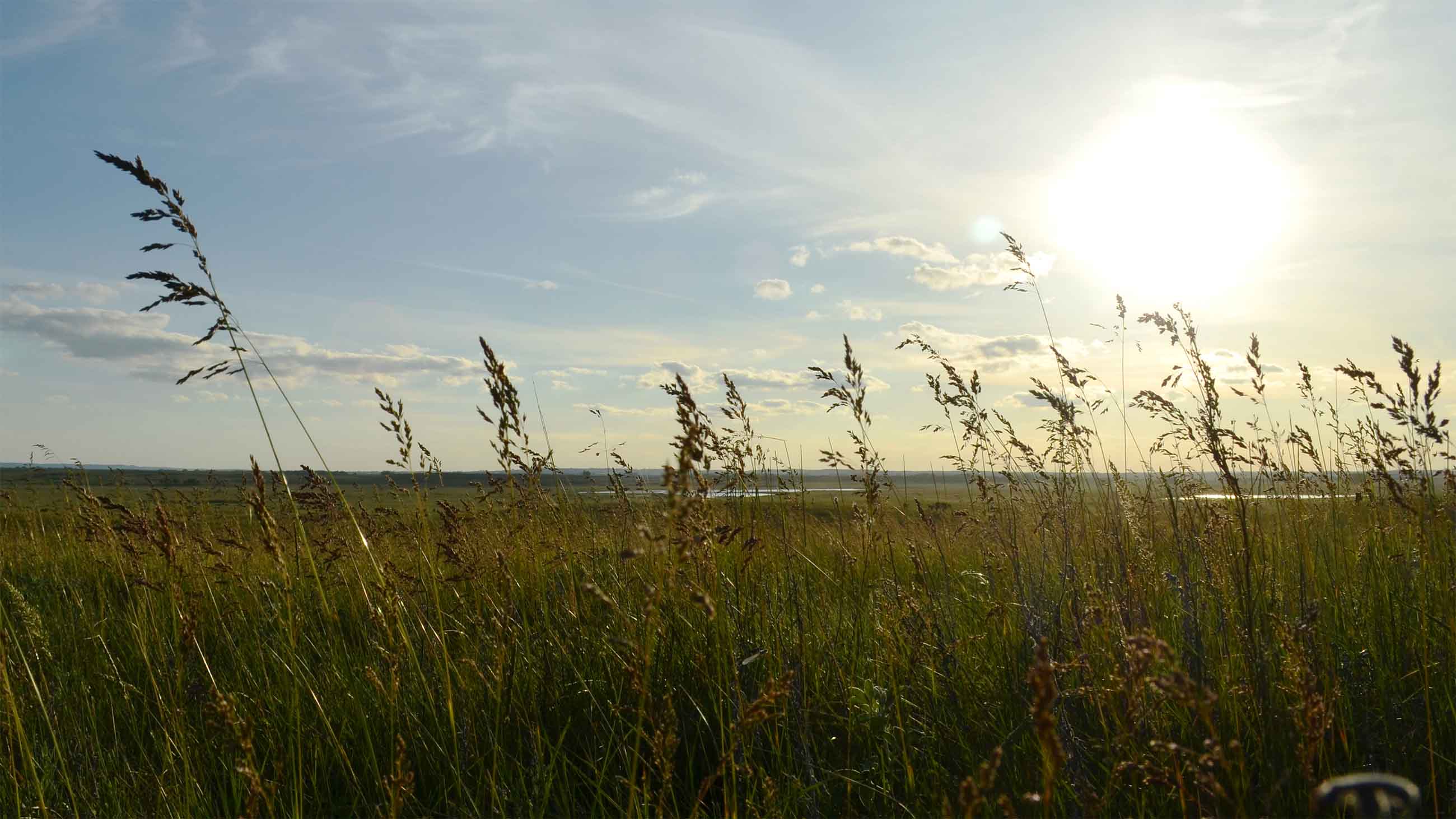
North America was forged in a crucible of water, wind, sun, and Earth’s churning, radioactive asthenosphere. Candace Savage details the geologic history in her 2004 book “Prairie: A Natural History.” Rising seas inundated the shifting landmass again and again across hundreds of millions of years. The ocean deposited budding life forms onto barren rock. Land plants and animals evolved in fits and starts. Across eons, they would absorb the sun’s energy in life and deliver it to the land in death.
Water and wind coursing off the emerging Rocky Mountains distributed fertile sediment throughout the middle third of the continent. In the north, great walls of ice churned up and carried with them crumbled clay, silt, sand, gravel, and the remains of prehistoric life. The glaciers retreated, the Ice Age ended, and a frozen tundra gave rise to flat, fertile plains. The landscape Shook introduced me to is pockmarked with wet depressions left behind by chunks of glacier that mixed in with the till and melted underground. They call this part of the prairie the Prairie Pothole Region.
Too dry to be a forest but too wet to be a desert, the arid, landlocked prairie was perfect for the kinds of scrappy grasses and big woolly mammals that came to dominate the landscape. Homo sapiens arrived at least 11,000 years ago. They lived nomadically and demanded little of a land they grew to view as sacred. They followed roving herds of bison — numbering, at their peak, in the tens of millions. Humans hunted them for food, clothing and shelter, and found in them spiritual meaning and connection. “The buffalo was everything to us,” Plenty-Coups, a Crow chief said reflecting on his youth in the mid-19th century.
Europeans came to this area first in the 16th century, lured into a sea of grass by stories of cities of gold. What they found instead was a golden landscape, rich not in mineral wealth but in fertile soil, abundant wildlife, and endless vistas. They had no word for this strange landscape — funny-looking grasses, often as tall as a person, stretching from horizon to horizon — and they ultimately settled on “prairie,” the French word for woodland meadow: not quite right, but close enough.
Whatever it was, Europeans found their own kind of holiness in the land. Here they might build, Savage notes, their Garden of Eden — a rich, virgin landscape intended as a gift from its creator to immigrants from a crowded and exploited continent. Suddenly their long and dangerous journey had meaning. When the United States of America was born and took shape, this sense of purpose found expression in the widely (though not universally) held belief in the idea of manifest destiny. Having inherited this bounty from their creator, new Americans felt duty-bound to inhabit, organize, and cultivate land they viewed as untamed, and to displace, convert, or kill people they viewed as savage.
A vast abstraction of nature ensued, made possible by more people and better technology. The historian William Cronon charts the commodification of Western land in his “Nature’s Metropolis: Chicago and the Great West.” Waves of European immigrants made new demands upon the land, converting plants into crops, trees into lumber, and animals into meat. In 1837, John Deere of Grand Detour, Illinois, invented the steel plow, and unlocked fertile soil under stubborn tallgrass prairie. Grain elevators and railroads enabled the buying and selling of agricultural products on a scale never before imagined, and opened a gap between producers and consumers. Commodity markets and futures trading widened that gap.
Across a couple of hundred years — not even a blink of the eye in geologic time — a big, quiet home for lightly grazing mammals became organic fuel for the modern age. This brought great benefits to a new society — plentiful food, sturdy shelter, and untold amounts of other necessities and goods. But a population of native humans and animals had been decimated, and a landscape had been drained of natural wealth thousands of years in the making.
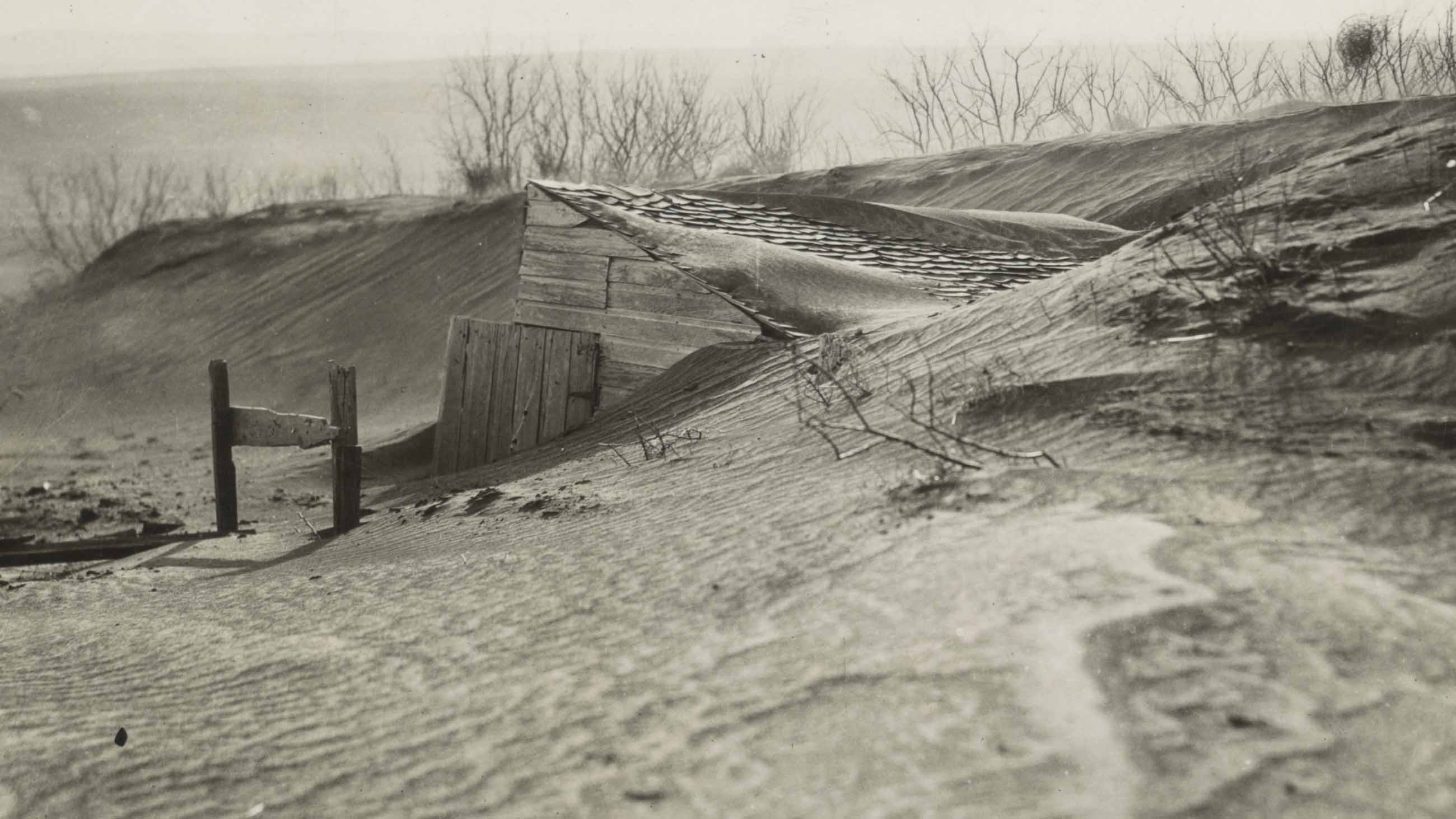
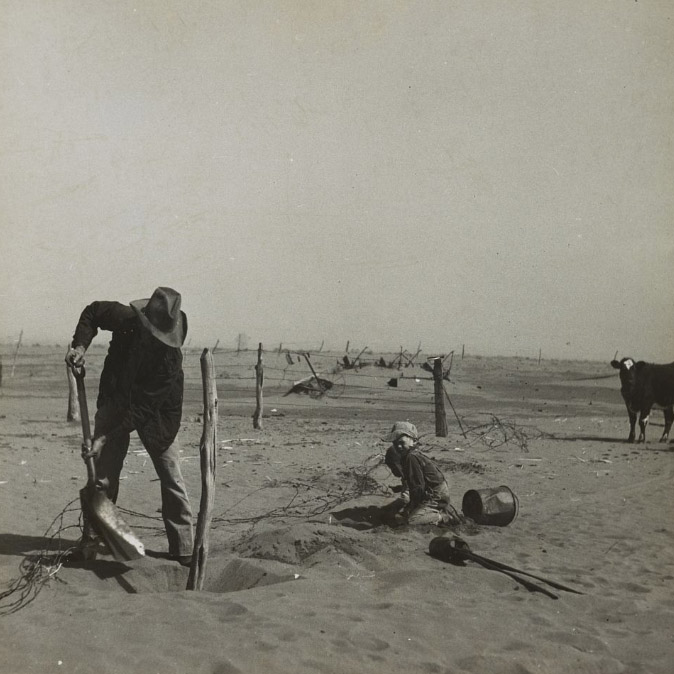
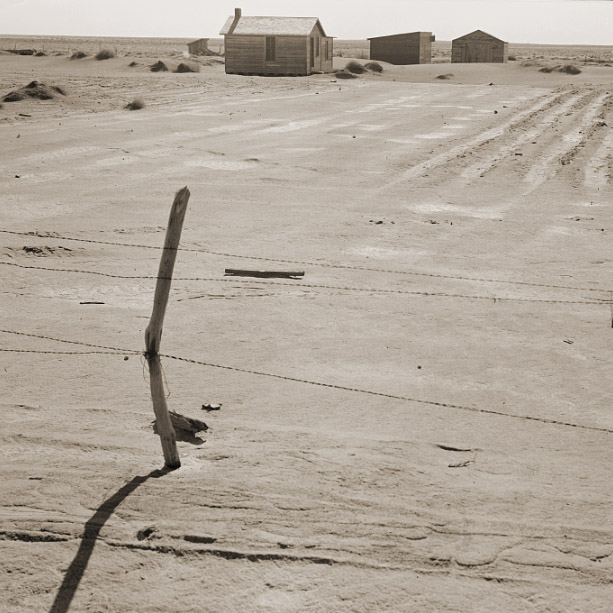
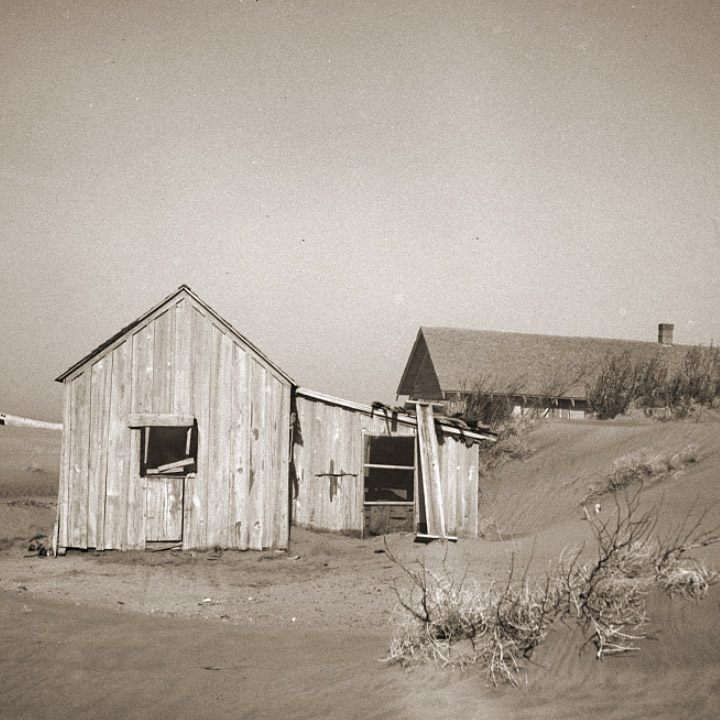
It all came to a head in the 1930s. The rise of mechanized farming, coupled with soaring wheat prices two decades earlier, led to overplowing the land. Deep-rooted grasses got pulled up, destroying the structures that retain water and hold soil in place. The land turned to dust, and winds carried it away. “Black blizzards” of prairie dirt and scourges of grasshoppers and jackrabbits plagued the Plains states throughout the decade. New Deal conservation programs helped turn the tide, and the rains finally returned in 1939. The Dust Bowl taught the country a hard lesson: Soil health matters.
It’s an easy lesson to forget. Today, farm and ranch families make up just 2 percent of the U.S. population. For most of us, dirt is dirt. Grass is boring. The prairie is empty. It’s hot under the North Dakota sun, and the grass is itchy and full of bugs. There’s nothing to do. This isn’t the rainforest. There are no mountains or canyons. This hardly even seems like grass — at least not the finely manicured sod Americans have come to love in suburban yards. These grasses look like the unmowed weeds on the side of the highway or under transmission lines. In many cases, that’s because they are.
Perceptions can deceive and seeing value in grass demands work. As a well-worn North Dakota aphorism puts it: Anybody can love the mountains, but it takes soul to love the prairie.
Neil Shook grew up in Clear Lake, Iowa, in a landscape that, if not for all the corn, might look similar to the land he currently lives on. When he was in junior high, he joined the speech team. He was good, he recalls, and one year he made it to the state competition. Shook’s speech, replete with handmade charts and maps, was on the topic of wetland loss in Iowa. The state had gone through its own transformation from prairie to agriculture, and landowners were at times draining wetlands — home to a diverse array of bird and plant species — to maximize crop acreage.
Shook did not win the competition.
Afterward, he recalls decades later, “one of the judges walked up to my parents and said, ‘You know, your son did a really good job, and he should’ve got first, but there was no way that we would give him first for a speech on that topic.’” Anything remotely critical of agriculture in Iowa was — and to a great extent still is — tantamount to blasphemy.
“And that … that just ignited the fire in me,” Shook says. “I was like 12 years old and learning a life lesson — learning about politics.”
After college and a stint in the Peace Corps, he spent some early years pushing papers in Washington, D.C. for the U.S. Fish and Wildlife Service. In 2010, he got his ticket back to the prairie: a transfer to North Dakota, a state he’d fallen in love with while volunteering at a refuge there in college. On his first day at Chase Lake, he was given a tour of the region.
“I remember just seeing,” his voice lowers to a whisper, “all the grass. And I’m like ‘Oh, my God. This is incredible.’”
Not long afterward, the smoke plumes began to appear. Corn prices rose to an all-time high of $6.89 per bushel between 2012 and 2013. Soybean prices doubled in six years, reaching $14.40 per bushel in 2012. To capitalize on the seller’s market, American farmers planted 97.3 million acres of corn in 2012, a level not seen since 1937, the year President Franklin Delano Roosevelt told a depressed, dusty populace, “I see one-third of a nation ill housed, ill clad, ill nourished.”
And as farmers put more acres into corn and soybean, they took millions of acres out of a popular federal land conservation program. First authorized in the Food Security Act of 1985, the Conservation Reserve Program pays farmers to remove land from crop production for 10- or 15-year intervals. The goals are to improve soil and water quality while preserving the grassland and wetland habitats critical for bees, butterflies, ducks, and countless other species.
From 2007 to 2015, enrollment in the program dropped by more than a third, from 36.8 million acres (an all-time high) to 24.2 million acres — only slightly higher than in 1988, just three years after the program was authorized. In North Dakota alone, CRP acreage dropped by more than half over the same period, second in absolute terms only to Montana.
Even though commodity prices have cooled, the trend is all but certain to continue. Congress reauthorized the program in 2014, but it lowered the limit on total enrollment, from 32 million acres to 24 million acres by the 2018 fiscal year. That is expected to save the taxpayers $3.3 billion over a decade , but the value of what might be lost is hard to quantify. According to a 2011 USDA report, the conservation program:
• Reduced runoff of potentially harmful fertilizers — nitrogen by 607 million pounds and phosphorus by 122 million pounds — in 2010.
• Reduced soil erosion by 325 million tons a year since 2002.
• Reduced the volume of carbon dioxide emissions by 52 million metric tons in 2010 alone — by reducing the amount of carbon escaping from the soil because of human disruption, and through avoided fuel use. This is the largest such reduction on private lands for any federally administered program.
It’s worth emphasizing that CRP — like most state and federal prairie and grassland conservation programs — is completely voluntary. There is no law against breaking prairie, no single, unified plan for protecting the region’s plant and animal populations. How we use the American prairie is left largely up to farmers, ranchers, landowners, and the global supply-demand fluctuations that underpin how they decide to use their land. If the government offers you $50 an acre for CRP, but you can rent the land out to grow corn for $75 an acre, chances are you’re going to break prairie. In farming, particularly North Dakota farming, you take the good years when you can get them.
This may explain why Shook views a huge part of his job as getting to know and understand his neighbors, and for them to get to know and understand him. Farmers and ranchers largely understand the value of leaving land out of crop production, and many of them hunt and fish and thus have a vested interest in maintaining wildlife habitats. But there’s a long history of farmers and ranchers butting heads with environmentalists and conservationists — particularly when it involves the federal government telling them how to use their land.
For Shook, then, it becomes a question of trust and understanding. If he can better understand a farmer’s needs, and if that farmer can trust the Fish and Wildlife Service, then both sides are more likely to get what they want.
Shook likes to tell the story of Roger, an older man who flagged him down one Sunday. Roger owned a piece of land nearby with pristine prairie on it, and he had been offered $90 an acre to put corn on it. Roger took Shook to see the land, and asked him if there was any law against breaking it. Shook told him there was not, and asked Roger to go for a walk with him.
“So we started walking out on these hills,” Shook remembers. “It was early spring, and I’m seeing the pasqueflower, prairie smoke. I’m seeing the little bluestem and some of the other grasses, and I’m like, ‘Roger, you can’t break this up.’”
Shook dug deep into his conservation toolbox. He knew Roger’s grandsons were getting into the cattle business, and he told him about a program that would protect the prairie but still let his grandsons raise cattle on it. He tried to see if Roger would sell the land outright to the Fish and Wildlife Service. Shook even offered to buy the land himself (having not first consulted with his wife on the matter). As Shook remembers it, Roger took it all under consideration, but remained undecided. Ninety bucks an acre was good money.
About four months later, Shook was at home and looked out at the horizon. Smoke billowed up from Roger’s land.
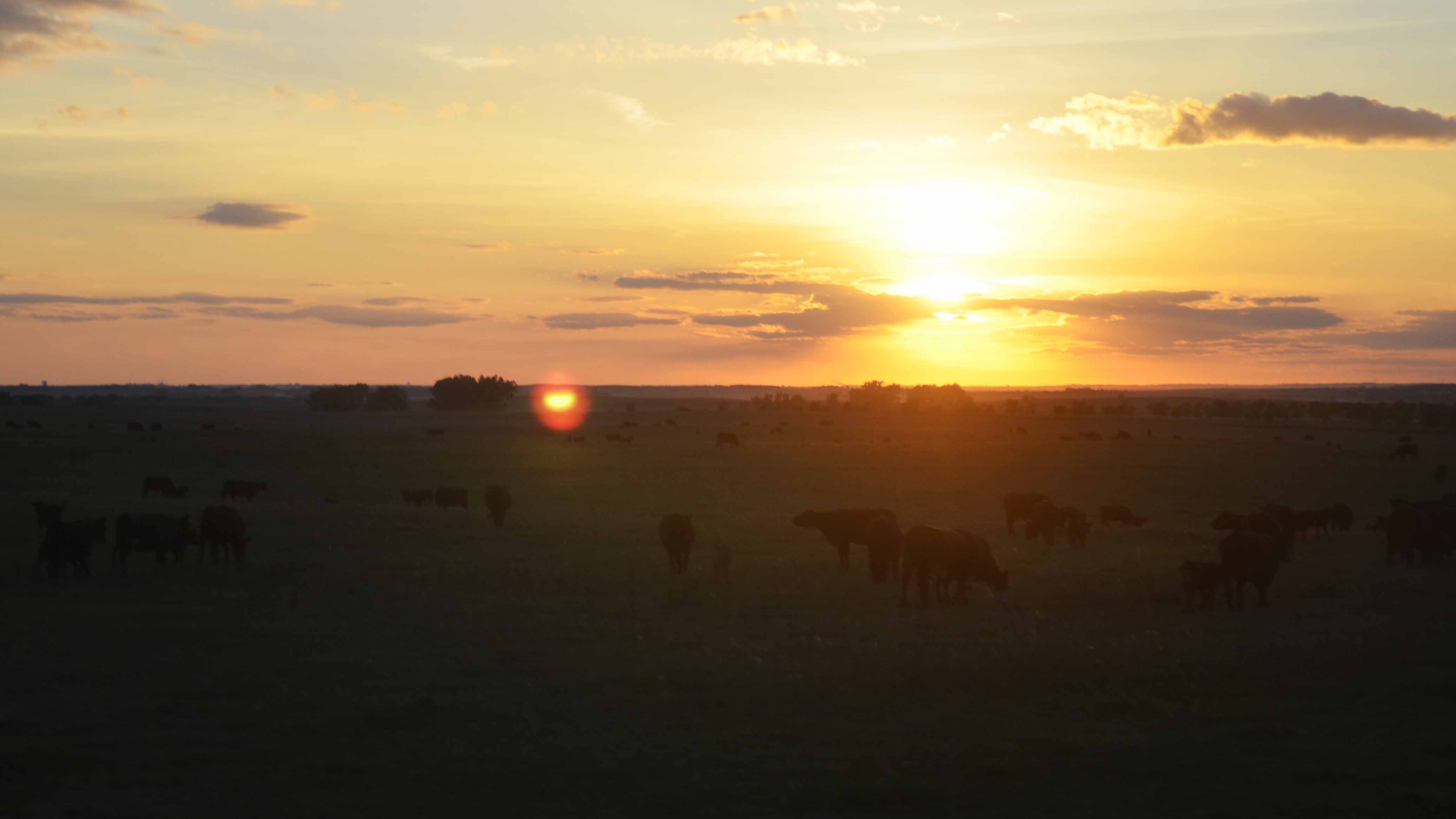
Twin silver silos rise up from the flat earth outside Spiritwood, North Dakota. These grain elevators, like prairie skyscrapers, each store up to 750,000 bushels of corn. Not a kernel of it will end up as cereal, syrup, candy, or bread. These grains will largely fill consumers’ gas tanks, not their stomachs.
The silos are part of a gleaming complex of steel called Dakota Spirit AgEnergy. In a given year, this biorefinery will grind up 23 million bushels of corn, slurry it, cook it, ferment it, and distill it. Out will come 192,000 tons of distillers’ grains used for livestock feed and 65 million gallons of a colorless, combustible liquid called ethanol. Tankers carry the ethanol to gasoline terminals and retailers, where it is blended into the fuel dispensed at service stations across the U.S.
Dakota Spirit, one of five plants like it across North Dakota, opened its doors in 2015, but its origins trace back to 2005. That year, Congress authorized the Renewable Fuel Standard, which requires fuel producers to blend increasing amounts of biofuel into the country’s supply of petroleum-based transportation fuel, heating oil, or jet fuel. The law was born of a time when oil prices were on the rise, domestic oil production seemed in structural decline, and rural economies struggled under sluggish commodity markets.
The world has changed since then, to put it mildly. Around 2007, an oil boom fueled by fracking took hold in the counties west of Spiritwood and in other shale rock formations across the country. Meanwhile, increased efficiency standards for U.S. cars and trucks ushered in energy-conserving engines and helped boost the alternative fuel, hybrid, and electric car industries. Oil production rose just as Americans’ appetite for petroleum-based fuels waned.
How that might change under President Trump is still an open question, although fuel-efficiency standards were among the first Obama-era mandates the new administration sought to scrap. Still, ethanol makes up nearly 10 percent of the U.S. motor gasoline pool, and biofuel supporters credit the Renewable Fuel Standard for that. An industry-backed study found that in 2016, the use of ethanol displaced 527 million barrels of foreign oil worth almost $26 billion. While it’s debated whether biofuels have helped to push down gas prices on their own, they surely have played a role in injecting cash into rural economies. Dakota Spirit, for example, employs 38 full-time people — significant, considering that the closest city, Jamestown, has a population of roughly 16,000. What’s more, the company notes, Dakota Spirit offers the kinds of skilled, good-paying jobs — operators, technicians, maintenance workers — that are hard to come by in small-town America. Local farmers, of course, benefit too.
“Because of this ethanol plant, we’ve increased our basis” — the difference between the local cash price for corn and the price on the commodity futures market — “by 20 to 30 cents a bushel,” says Jeff Enger, a local farmer and a director at large at the North Dakota Corn Growers Association. “So if we sell 400,000 bushels of corn here, that’s $80,000 just in the basis improvement.” The Dakota Spirit plant uses 23 million bushels a year, he continued, “so you’re talking a $4.6 million improvement just to this community and to the farmers.”
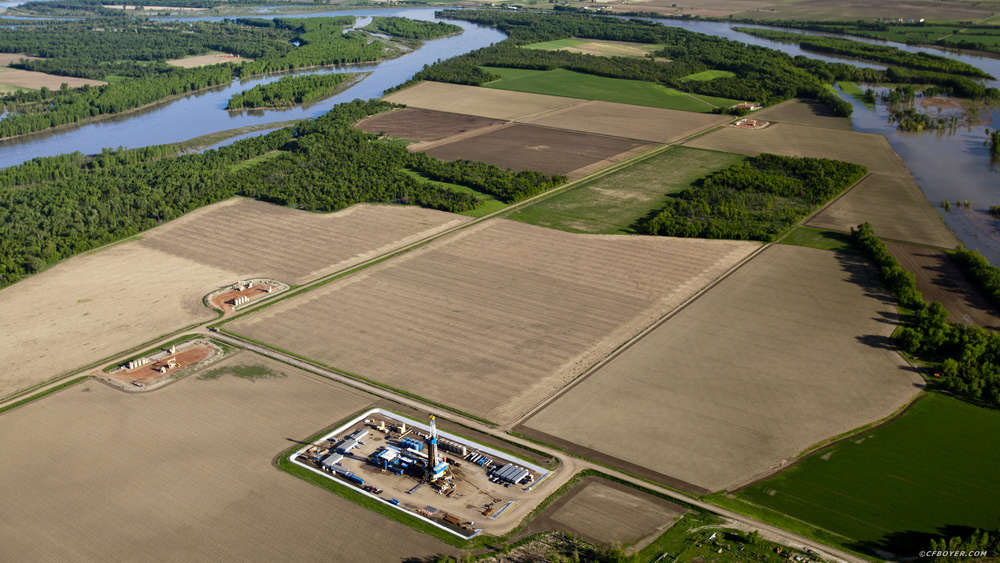
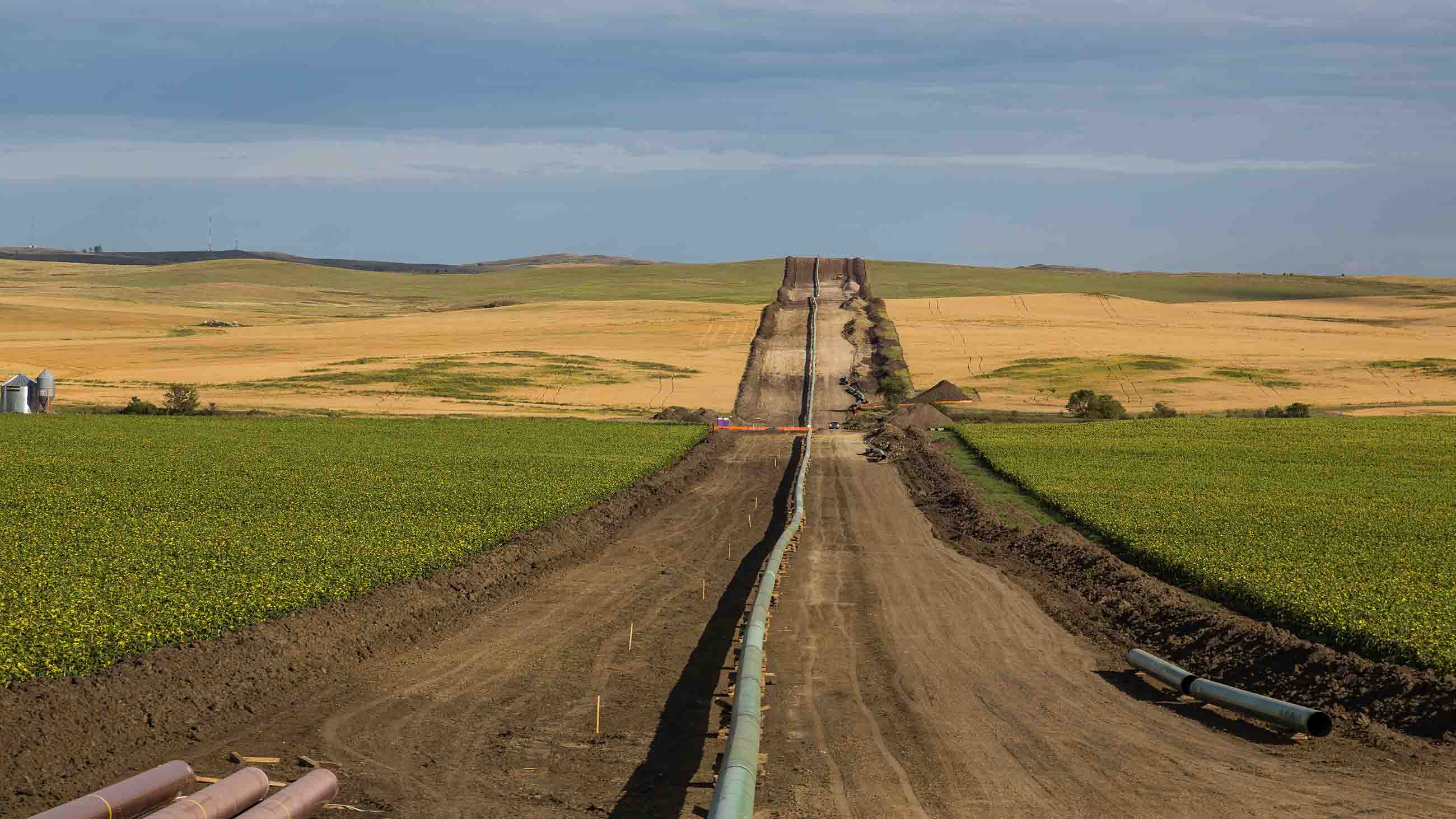

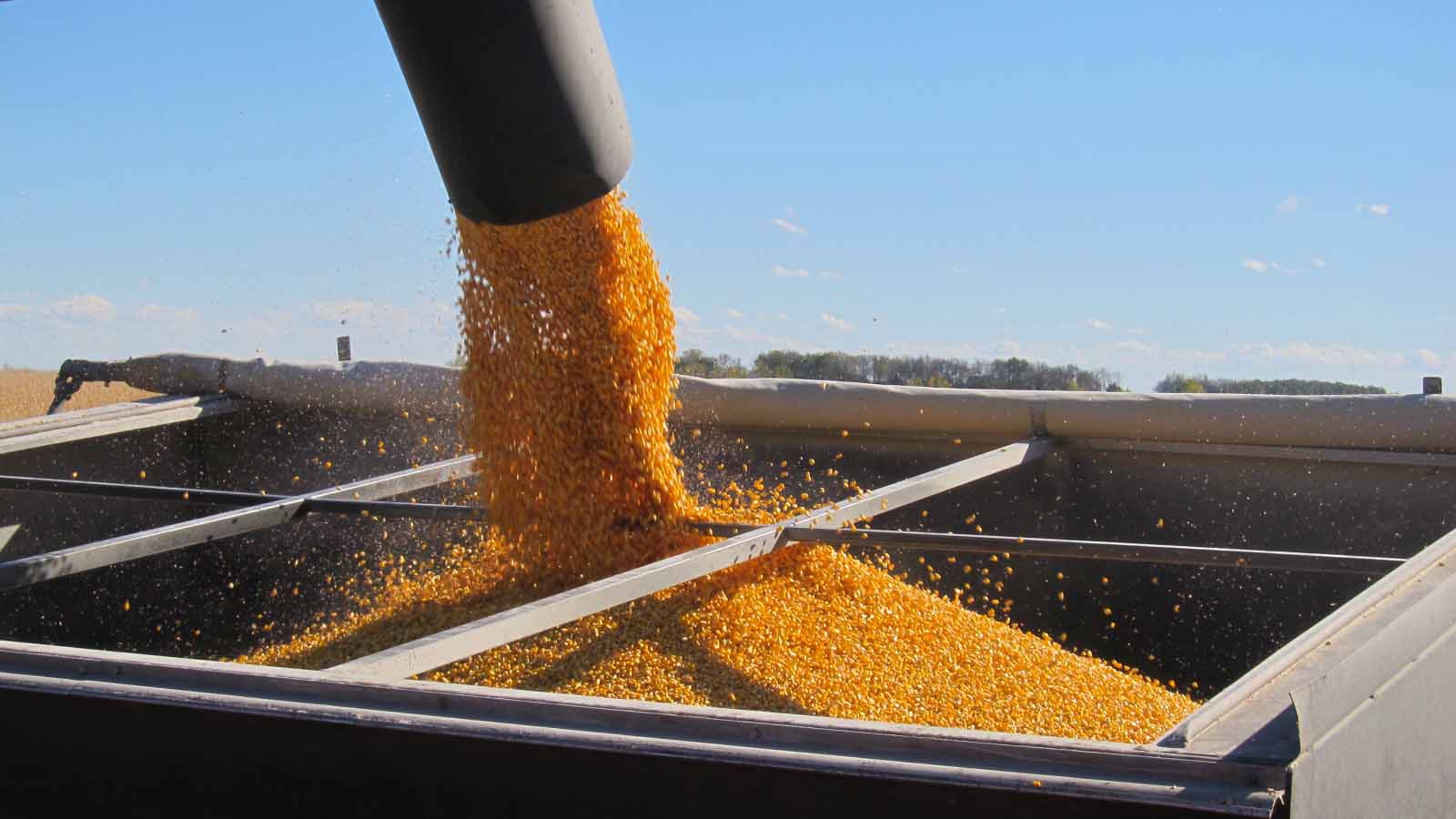
But to biofuel critics, “improvement” is the wrong word. Dakota Spirit is the product of a subsidized commodity that distorts the market and needlessly gobbles up acres of an otherwise useful landscape. We are turning prairie into corn, and corn into fuel, to fulfill a mandate that has outlived its purpose.
Studies based on satellite data collected by the U.S. Department of Agriculture suggest that cropland is indeed expanding at the expense of grasslands, and that the renewable fuel law has at least something to do with the change. Between 2008 and 2012, 7.34 million acres of land uncultivated since at least 2001 — the vast majority of which were grasslands — were converted to crop production, according to a 2015 study in Environmental Research Letters. South Dakota and North Dakota experienced the greatest increase in cultivation in the U.S. Corn Belt, the study’s authors found, and they attribute the shift largely to biofuel and crop insurance policies that encourage agricultural production on less productive land. The findings “suggest a need to immediately review U.S. agricultural and biofuel policies to ensure appropriate implementation and remove adverse incentives,” the study concludes.
Technically speaking, the Renewable Fuel Standard does limit the expansion of cropland onto prairie. The program stipulates that corn used for biofuel be harvested from land that was cleared or cultivated before December 2007 — in other words, corn for ethanol must come from land that had already been converted from grassland or wetland. Because tracking the source of every kernel of corn used in ethanol was considered excessively burdensome for growers, the Environmental Protection Agency decided to use an “aggregate compliance” method to determine whether agriculture was encroaching on prairie. The EPA set a national baseline of eligible cropland in 2007, and every year it checks to see if the total area of all U.S. farmland exceeds that threshold. If it does, biorefineries like Dakota Spirit will have to keep records and report the sources of its feedstocks.
Across the U.S., total farmland has declined in recent years; the figure is down slightly even in North Dakota. But the problem with this accounting method, critics contend, is that the national average obscures dramatic shifts at the local level. For example, if 100 acres of an oat farm in New Jersey give way to creeping suburbanization, and 100 acres of ecologically critical grasslands and wetlands in North Dakota is turned into corn, the EPA effectively registers zero change in land use.
“The aggregate compliance approach has been an abject failure in preventing the conversion of lands to meet the biofuel mandate, to say nothing of the indirect expansion that happened as corn displaced crops like wheat from existing agricultural lands,” Collin O’Mara, president and CEO of the National Wildlife Federation, wrote in testimony to the House Energy and Commerce Committee in June 2016. “The aggregate approach does not account for agricultural land that is lost each year to development, nor does it account for regional and local variations. Clearly, the intent of Congress in placing a conversion prohibition in the law has not been realized, and sensitive ecosystems, beloved wildlife, and nourishing water bodies are all paying a price as a result.”
Ultimately, there may not be enough information to conclude exactly how much the Renewable Fuel Standard drives land-use change. The satellite data used in the Environmental Research Letters study (and others) is generally considered an imperfect way to measure land use, and its accuracy varies from state to state. In a response to that study, scientists in Illinois and Tennessee noted that many of the states with the largest cropland conversions (including North Dakota and South Dakota) also exhibit the lowest accuracy in satellite data.
We ask a lot of the heartland — to feed us, to fuel our cars, and to do it all without completely annihilating the spaces that give us ducks, butterflies, and vistas that recall what this place looked like before we arrived. Caught in the middle are American farmers. There is a perception among many of them that the land around them is indeed changing. Most respondents to a survey of farmers in North Dakota and South Dakota in 2015 reported that grassland acreage within a five-mile radius of their farms decreased while corn and soybean acreage increased. Yet many view ethanol production as a much-needed shot in the arm for workers outside coastal urban centers.
“Young farmers have come back, it has provided jobs, and it has revitalized rural North Dakota,” Enger says.
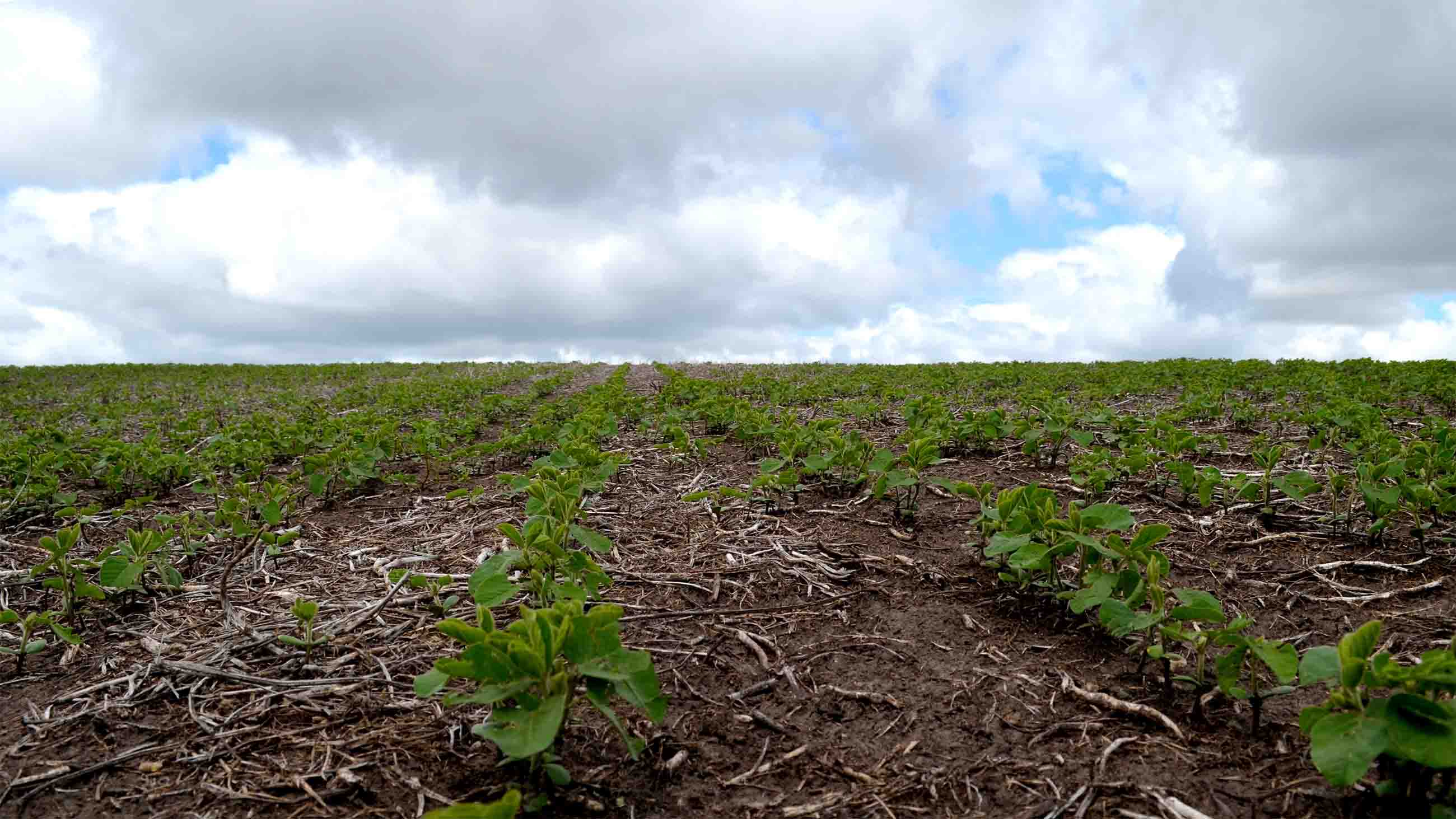
How bad can farming be? It never wholly occurred to me that agriculture might be “unnatural,” let alone harmful to the environment. Cities are “unnatural.” Buildings are “unnatural.” Corn is just another kind of grass. Even if it’s full of GMOs and chemical fertilizer, Zea mays still ultimately falls under the umbrella of “nature.” What is the difference between a field of maize and what was there before it?
In a word, complexity. Hundreds of species call the prairie home — not just grasses but mammals, amphibians, reptiles, and birds — and they will not survive without it. Bee and monarch butterfly populations are declining in the U.S., at least in part from habitat destruction. As of this January, the rusty patched bumblebee is officially an endangered species. Apart from being pleasant to look at, these and other pollinators play a role in more than a third of the world’s crop production. There’s even more beneath the surface: algae, fungi, bacteria, protozoans, and other microscopic life forms. A single teaspoon of soil contains more microorganisms than there are people on Earth. These critters are what break down larger life forms into the rich, dark humus that makes for fertile soil.
A cornfield, on the other hand, is a field of corn. In conventional farming, most other life is scared off, burned off, or sprayed off. What was once a biotic medley is reduced to a one-trick pony. A polyculture becomes a monoculture.
The potential problem with agricultural production lies not just in what is taken from the landscape, but also in what is added to it. Commercial fertilizers supply nutrients that might otherwise come from the natural lifecycles of grass and animals. The nitrogen and phosphorus in these fertilizers are naturally occurring, but too much of them running off from farmland can pose serious threats to nearby water systems and the people who drink from them. In Iowa, a regional water utility sued three rural counties for the nitrogen runoff that is polluting the water supply in Des Moines. A federal judge dismissed the utility’s claims in March.
As the use of commercial fertilizer increases in North Dakota — and as runoff-absorbing, sponge-like grasslands and wetlands are removed — some observers worry that the state may soon suffer the same kinds of contentious water debates that divide Iowans.
Darrell Oswald is one of those people.
“We’re inputting ourselves to death,” says Oswald, a fourth-generation cattle rancher in Wing, North Dakota. An obsession with increasing production masks the associated rise in fertilizers, herbicides, pesticides, antibiotics, and diesel fuel. None of those things are intrinsically bad, he says, but the more you use them, the greater the economic cost and potential for ecological harm. “In some years, the money you don’t spend is the money you make,” Oswald says, quoting an adage from his grandfather.
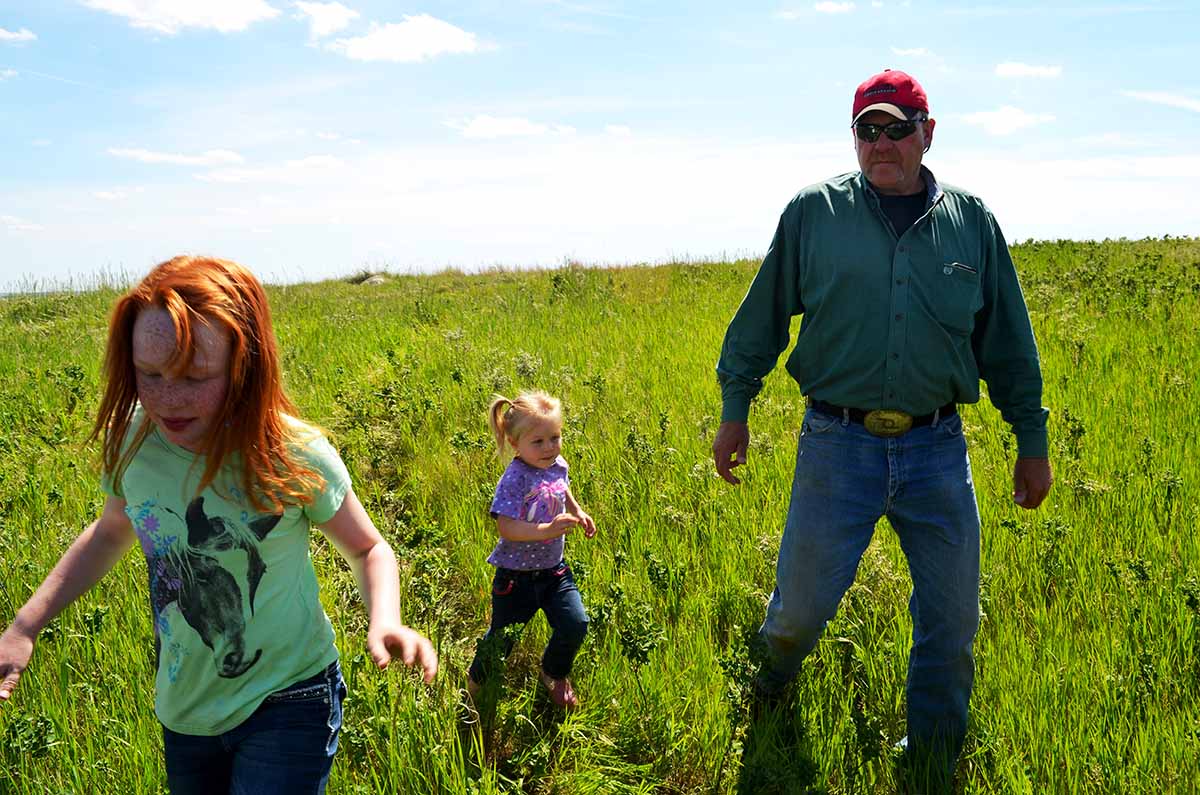
There are alternatives to this input-heavy, monocultured approach to farming and ranching. Call it organic farming, sustainable agriculture, or holistic management, but the fundamental principle remains the same: The ultimate resource in a well-nourished society is not the cattle or the corn kernel, but the soil and water from which they arise.
Rather than fighting nature, these alternative approaches seek to work with the natural processes that created the fertile grasslands in the first place. Instead of plowing up the land each season, a farmer might leave the soil undisturbed and allow the residue from last season’s crop to decompose naturally. This preserves the underlying soil structures that retain water and carbon and allow the microorganisms to do the reductive work they’ve done for eons. After the harvest, a farmer might temporarily plant cereal rye, oats, or winter wheat to maintain biological activity and prevent the erosion that comes with exposed topsoil. Across multiple seasons, a farmer might rotate the kinds of crops he or she plants, thereby diversifying the organic matter that returns to the soil and potentially providing habitat for a wider range of species.
There’s a long list of these kinds of sustainable farming practices, and none of them are new. The Romans rotated their crops. Thomas Jefferson wrote of cycling through wheat, clover, peas, corn, and potatoes in the hope that “my fields will recover their pristine fertility, which had in some of them been completely exhausted by perpetual crops of Indian corn and wheat alternately.” The rise of mechanized farming and synthetic fertilizers in the mid-20th century helped to erode these practices. Geopolitics played a role, too. By supplying food to the rest of the world, the U.S. sought to gain leverage at the negotiating table. “Food is power,” as former Secretary of Agriculture Earl Butz put it in 1974. “Food is a weapon.” Farming got bigger, more specialized, and more industrialized.
After years of struggling with a conventional approach to managing his land, Oswald started hearing about alternatives in 2006, and he began to implement cover crops and crop rotation. As a rancher, he implemented a cattle grazing system that mimicked the random, spatially diverse patterns of the bison that once roamed the land. Since then, he says he has reduced the amount he spends on fertilizers for the land, fuel for his vehicles, and veterinary care for the cows, while he’s made a profit and his yield has risen.
“When we started mimicking nature and looking at how we treat the resource … that’s when things started to turn around,” Oswald says.
He now advocates for this “soil health first” approach to land management and such practices are coming back into fashion. Roughly 40 percent of all corn, soybean, wheat, and cotton were raised in no-till or minimal-till operations in 2010-11, according to the latest data available from the USDA. Cover crops, on the other hand, were used on only 1.7 percent of U.S. cropland in the same years. Farmers cite increased seed and labor costs, and a general difficulty in understanding the technique, as reasons for not using them.
Oswald chalks up that reluctance to force of habit. Farmers have a tendency to do things the way their parents and grandparents did them. Any deviation from tradition breeds skepticism. Paradigms in agriculture — as in many sprawling systems — don’t change overnight. In Oswald’s eyes, the greatest obstacles to leaving the land better for his daughters and their families are education and information.
“I don’t want to sound like a doomsday-er, because I’m really not,” he says. “I think there’s a tremendous future in [agriculture], and I think we will do the right thing, but it takes some time.”

It’s just a big rock in a field, a small boulder, really, but Shook — back at Chase Lake — knows what it means. He points out how the edge of the rock shines, and he gestures to the stumpy grass beside it.
Bison roamed the middle of the continent by the millions before western-bound Europeans hunted them to near extinction. Some shot the placid herbivores for sport from passing locomotives, leaving the carcasses to rot in waste. The U.S. Army aided in the slaughter, hoping it would hasten the demise of Native Americans. By the late 19th century, there were just over 1,000 bison left.
Decades of work by tribal leaders — along with the intervention of a conservation-minded president Theodore Roosevelt and an intrepid zoologist William Temple Hornaday rescued the animal from complete annihilation. Today, some 500,000 bison live across North America, though the vast majority are raised for meat and have been interbred with cattle. Last year, the federal government declared bison the national mammal.
Shook’s rock is a buffalo rock, he says. Bison migrating across the centuries would scratch themselves on the rock’s edge, giving it a shine and mashing down the earth around it.
“The bison speaks to what it is to be an American, and that’s what this rock represents” Shook speaks slowly, letting each syllable land. “When we plow up prairie, these rocks will just get moved to a rock pile and dumped. We lose that, that culture and history,” he adds.
The farther east you go, the more the prairie culture and history is already gone. I was born and live in Illinois — which is still sometimes called the Prairie State, even though less than .01 percent of its original 21 million acres of tallgrass prairie remains today.
Wild bison hadn’t roamed free on Illinois grass since the 1830s. In October 2014, they finally returned. The Nature Conservancy, an international conservation group, introduced 30 genetically pure bison to Nachusa Grasslands, a 4,000-acre restoration project about 100 miles west of Chicago.
You can now see the brown, fuzzy mammals wallow in the mud and live out their days largely undisturbed by human touch. It is an elegiac act of restoration. These nearly mythical beasts are resurrected just miles from the urban market that facilitated their demise. The human tendency may be toward extirpation, but it retains an enormous capacity for healing.
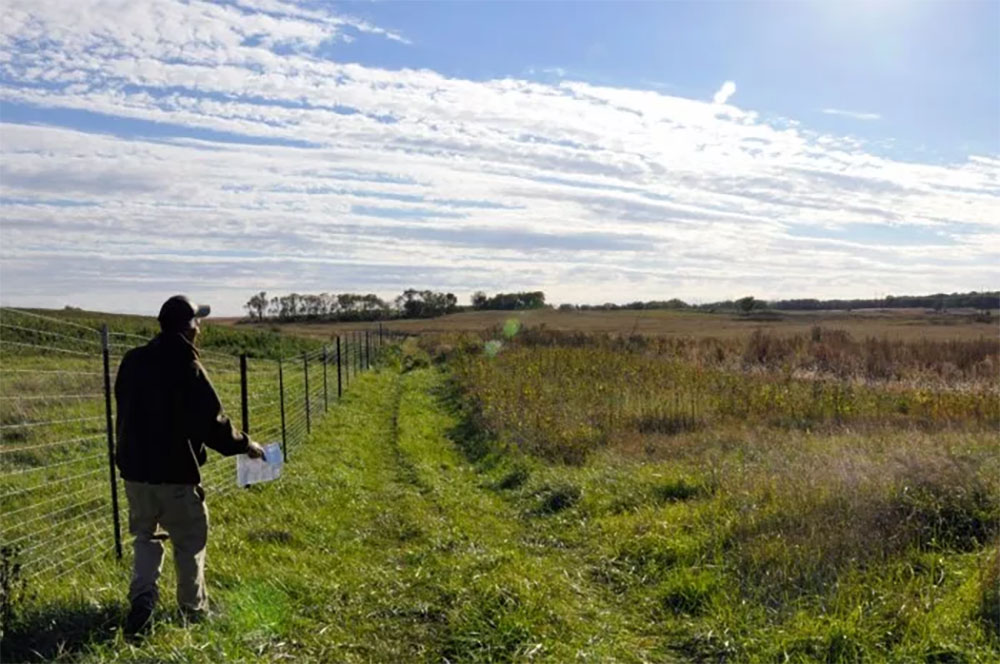
Last August, Jay Stacy, a longtime volunteer steward at Nachusa, took me to the piece of prairie restoration to which he tends. In a bumpy four-by-four, we drove through what he called an “almost sterile” cornfield to a ridge full of little bluestem, side-oats grama, prairie clover, leadplant, thimbleweed, and baptisias. The pastiche of colors and textures somehow looked right, but I don’t know why. Stacy, in between drags on a Marlboro, explained to me how they revert cropland back to grassland. The bad news about being a conservationist in Illinois is that there is very little grass left to conserve. The good news is that you can work on offense rather than defense. Where Shook looks to hang onto what native grass is left in North Dakota, Stacy and his cohort in Illinois eye the corn across the road to see if they might buy it and turn it into something like what it was.
Some neighbors might call that a waste. What good is grass in a field that could grow calories for us to consume? If we don’t maximize production, how will we feed the nearly 10 billion people expected to inhabit the planet by 2050? Perhaps paradoxically, the expansion of cropland “may actually be undermining the very agricultural productivity it seeks to gain,” write the authors of the Environmental Review Letters study. Compared to cropland, grasslands “harbor significantly greater plant, microbial, and animal diversity, and generate higher levels of nearly all agriculturally vital ecosystem services, including pest suppression and pollination.” To break prairie, then, is to dismantle the very supply chain that underpins American agricultural abundance.
“Do we want to feed them for a day?” says Dr. Johann Walker, a waterfowl population ecologist with Ducks Unlimited, in response to the oft-cited feed-the-world argument. “No, we want to feed them sustainably, and if we diminish the health of our soil and our watersheds a great deal over time, you won’t be able to find enough land to feed those people even if we tear up all this grassland.”
There are also the cultural and historical reasons for tending to grass. The prairie is part of what makes America great, and it behooves us to make it that way again. And there are reasons even less tangible. To lose the prairie is to lose yet another space that demands patience and focus but offers no specific stimulation in exchange. It’s fitting that the late author David Foster Wallace began his final unfinished book about boredom and attention with an Illinois prairie scene. To open “The Pale King,” he rattles off the odd plant names growing on “very old land” — “shattercane, lamb’s-quarter, cutgrass, sawbrier, nutgrass, jimsonweed, wild mint … ” “Read these,” Wallace implores.
On the drive back, I asked Stacy why he thought we should care about the prairie. He killed the engine and we stopped amid the corn. The crickets’ beeps pulsed around us again. Stacy started his response by citing St. Thomas Aquinas, before imagining what Jesus of Nazareth would think of all of this. He praised Pope Francis’ encyclical “Laudato Si’,” which says, “It is not enough … to think of different species merely as ‘resources’ to be exploited, while overlooking the fact that they have value in themselves.”
Stacy reiterated the practical and historical reasons, too, but for him the ultimate reason is a religious one. You have to believe in something larger than yourself and your own needs.
He started the truck again and drove on, but he hadn’t finished his thought: “Our glory as a species,” he shouted over the engine’s hum, “We’re the one species that can look at this and say ‘We can fix it!’ A bison can’t do that.”
He drove farther through the corn and added: “We were given reason to understand all this.”
David J. Unger is a Chicago-based writer and reporter who has written for Midwest Energy News, InsideClimate News, The Christian Science Monitor, The Atlantic and other outlets. Previously, he was the energy editor at The Christian Science Monitor in Boston, where he wrote and edited stories about the global energy transition toward cleaner fuels.
Reporting for this story was made possible in part by a fellowship from the Institute for Journalism and Natural Resources.










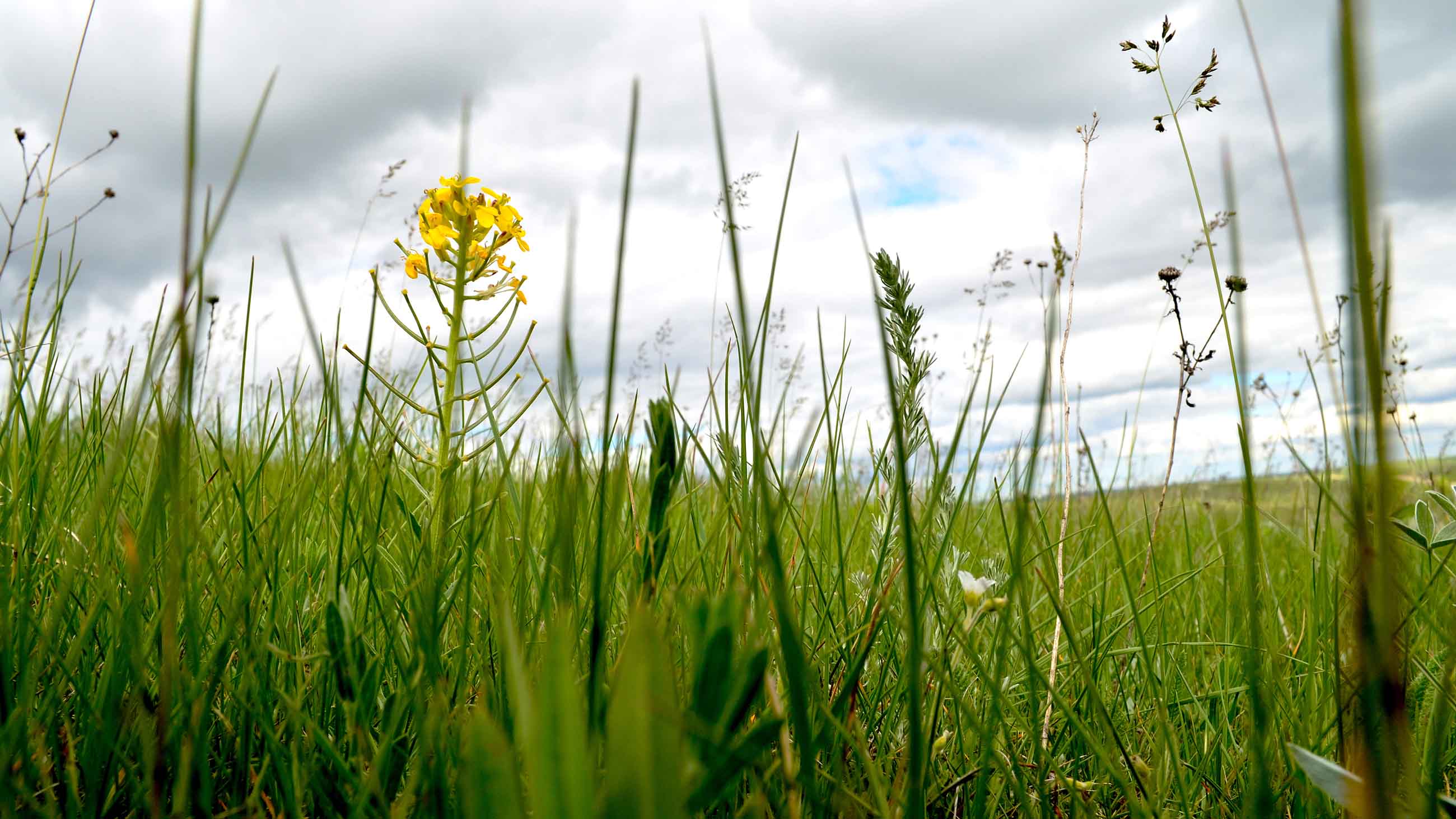
Comments are automatically closed one year after article publication. Archived comments are below.
Grand!
I really appreciated this article. Really lovely. However, the implication that native peoples in North America didn’t alter their landscape is outdated and incorrect. In fact, as far as I can recall, many Woodland groups, at least, practiced extensive “ecological management,” burning prairie regularly to prevent encroaching forest, cultivating edible plants, nuts and berries at their different seasonal campsites, etc. They were (and *are*), throughout much of their history on this landscape, the original sustainable agriculturalists. By the same token, the Mississippian native communities (400-1000 CE, roughly) practiced something a little closer to modern monocultural farming, and, in the end, abandoned that practice when it lead to disastrous results. In other words, for what I’ve heard and read, there’s a much longer history of learning how to live on and with the land in North America, and we shouldn’t give in to the myth that American Indians didn’t also participate in shaping the landscape (increasing the reach of the prairie in some places almost to the east coast). The main difference is that it seem they learned from their experiments, and respected the landscape implicitly.
A clarifying question. The article stated: “In Oswald’s eyes, the greatest obstacles to leaving the land better for his daughters and their families are education and information.”
Does this mean that the obstacles are what is passing for education and information, i.e. they are outdated and not leading to improved land or the obstacle is that there’s not enough education and information about alternative practices?
Important, eloquent reporting. Great work
Enlightening article on an important ecologic topic. Very well told. Thank you.
Hello from south central Iowa, very nice well written article. We need to save prairie remnants and restore more land into prairie! It’s our heritage and must be preserved for the many reasons listed in this here.
Excellent informative article! I grew up in Nebraska and live in Kansas now, but this article taught me things about the prairie and prairie management I never knew, thank you. I hope we are not too late to ‘save the prairie!’
Thanks, Heather. It’s such an important and beautiful story and we’re very proud to have published it.
Thank you for this wonderful piece! Unger did a fantastic, thorough job of bringing sunlight to a landscape often overlooked. I’m at the Nature Conservancy in Illinois and we really appreciate how this was told. We shared it everywhere! :) And Jay is definitely a great character to illustrate the work. Really wonderful!
Very, Very Cool!
Thank you for this amazing article!!! I hope everyone in America gets a chance to read it!